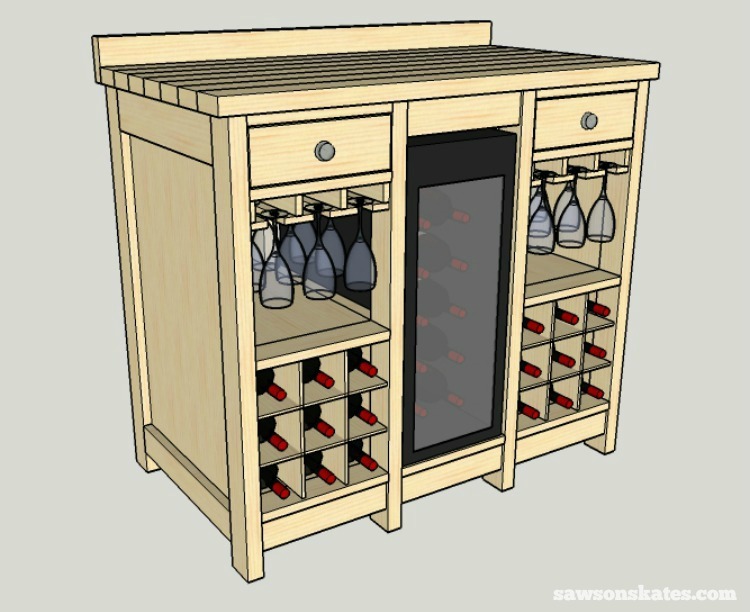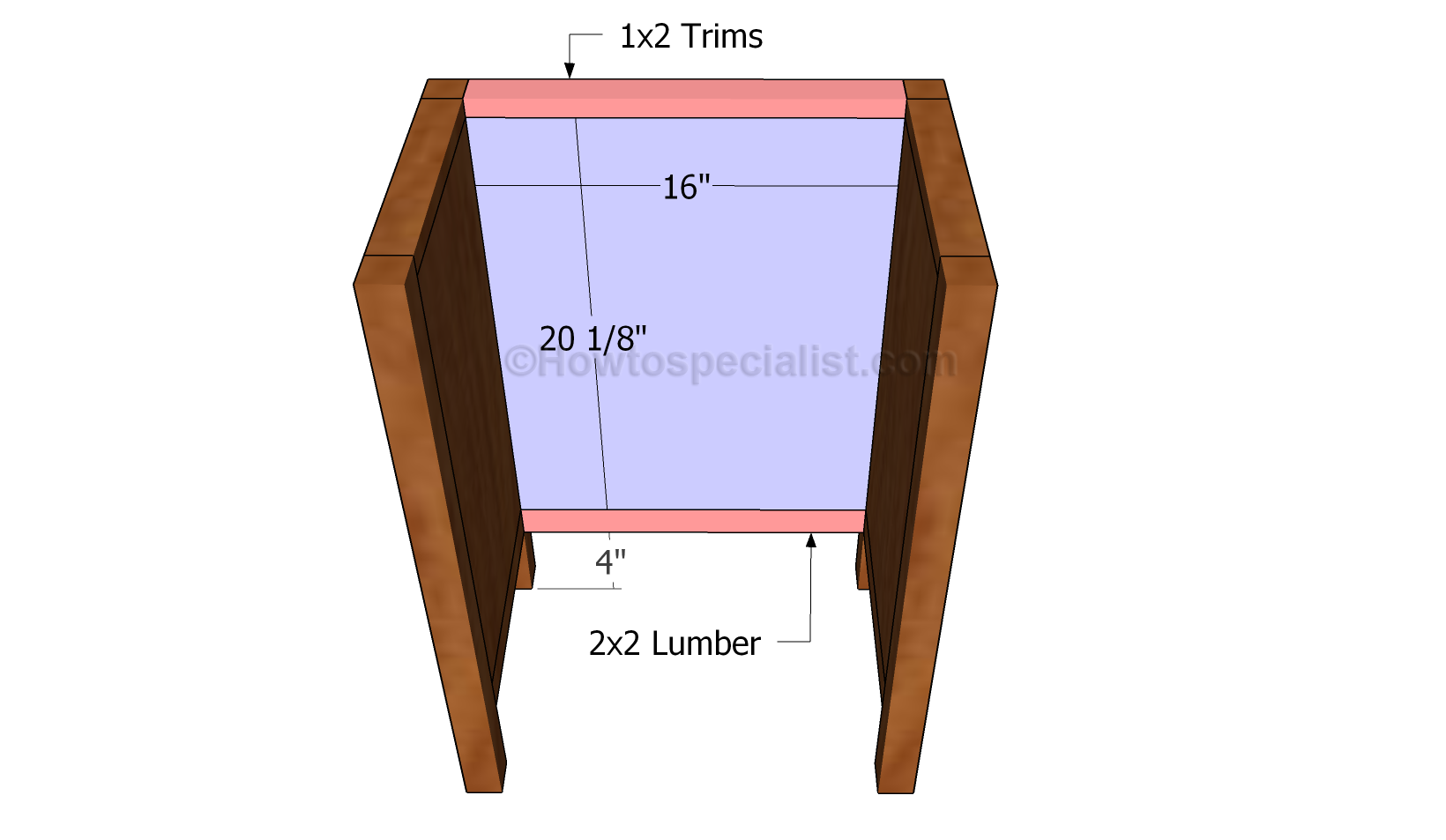Wine Cabinet Design Styles

A wine cabinet is more than just a storage space; it’s a statement piece that reflects your personal style and enhances your home decor. Choosing the right design style is crucial to create a harmonious blend of functionality and aesthetics. Let’s explore some of the most popular wine cabinet design styles and their unique characteristics.
Traditional Wine Cabinet Styles
Traditional wine cabinets exude elegance and sophistication, often drawing inspiration from classic architectural elements. These cabinets are characterized by intricate carvings, ornate moldings, and rich wood finishes.
- English Country: This style features a rustic charm with exposed wood beams, distressed finishes, and hand-forged hardware. Think of a cozy farmhouse kitchen with a touch of elegance.
- French Provincial: Inspired by the countryside of France, this style emphasizes a romantic and airy feel. Expect soft, pastel colors, delicate floral patterns, and distressed white paint.
- Victorian: Victorian wine cabinets are characterized by elaborate details, dark wood finishes, and a sense of grandeur. They often feature intricate carvings, stained glass accents, and heavy, ornate hardware.
Modern Wine Cabinet Styles
Modern wine cabinets embrace clean lines, minimalist aesthetics, and a focus on functionality. They often feature sleek materials like metal, glass, and high-gloss finishes.
- Mid-Century Modern: This style draws inspiration from the 1950s and 1960s, emphasizing organic shapes, geometric patterns, and a mix of natural and synthetic materials. Expect to see walnut wood, chrome accents, and a focus on clean lines.
- Contemporary: Contemporary wine cabinets are characterized by bold colors, geometric shapes, and a focus on innovative materials. They often feature metal accents, glass panels, and a minimalist aesthetic.
- Industrial: This style embraces raw materials like exposed brick, metal, and reclaimed wood. Think of a loft apartment with a touch of industrial chic.
Rustic Wine Cabinet Styles
Rustic wine cabinets offer a warm and inviting ambiance, often featuring natural materials like reclaimed wood, stone, and metal. They embrace imperfections and textures, creating a sense of authenticity and history.
- Farmhouse: This style features distressed wood, weathered finishes, and a focus on practicality. Think of a cozy farmhouse kitchen with a touch of rustic charm.
- Log Cabin: Log cabin wine cabinets are characterized by rough-hewn logs, rustic hardware, and a focus on natural materials. They often feature a warm and inviting ambiance.
- Barnwood: This style utilizes reclaimed barnwood, creating a unique and eco-friendly look. Expect to see knots, imperfections, and a weathered finish that adds character and charm.
Contemporary Wine Cabinet Styles
Contemporary wine cabinets blend modern and traditional elements, creating a sophisticated and timeless look. They often feature sleek lines, high-quality materials, and a focus on both functionality and aesthetics.
- Transitional: This style bridges the gap between traditional and modern design, offering a balanced and versatile aesthetic. Expect to see clean lines, neutral colors, and a mix of classic and contemporary elements.
- Eclectic: Eclectic wine cabinets embrace a mix of styles and textures, creating a unique and personalized look. They often feature unexpected combinations of materials, colors, and patterns.
Wine Cabinet Features and Functionality: Wine Cabinet Design Ideas

A wine cabinet is more than just a storage space for your favorite bottles. It’s a dedicated environment designed to preserve the quality and flavor of your wine collection. With the right features, you can ensure your wines age gracefully and reach their full potential.
Temperature Control, Wine cabinet design ideas
Maintaining a consistent temperature is crucial for wine preservation. Temperature fluctuations can cause premature aging, oxidation, and even damage to the wine. A wine cabinet with temperature control allows you to set the ideal temperature for different types of wine. For example, red wines generally prefer a temperature range of 55-65°F (13-18°C), while white wines and sparkling wines are best stored at cooler temperatures between 45-55°F (7-13°C).
Humidity Control
Humidity is another essential factor in wine storage. Cork stoppers, which are used to seal most wine bottles, are porous and can dry out over time. This can lead to air entering the bottle, causing oxidation and spoiling the wine. A wine cabinet with humidity control helps maintain a relative humidity level of around 70%, preventing the corks from drying out and preserving the quality of your wines.
Lighting
While lighting is not essential for wine storage, it can enhance the aesthetics of your wine cabinet and make it easier to view and select your wines. LED lights are a popular choice for wine cabinets because they emit minimal heat, which can affect the temperature of the cabinet. Additionally, LED lights have a longer lifespan and consume less energy than traditional incandescent bulbs.
Table of Wine Cabinet Features and Benefits
| Feature | Benefit |
|---|---|
| Temperature Control | Maintains consistent temperature for optimal wine preservation, preventing premature aging and oxidation. |
| Humidity Control | Preserves the moisture content of cork stoppers, preventing them from drying out and allowing air to enter the bottle. |
| Lighting | Enhances the aesthetics of the wine cabinet, making it easier to view and select wines. LED lights are energy-efficient and emit minimal heat. |
Wine Cabinet Integration and Placement

Integrating a wine cabinet into your home is not just about storing your collection; it’s about creating a stylish and functional focal point that enhances your living spaces. The right placement can elevate your home’s aesthetics and provide a convenient access point for your prized bottles.
Kitchen Integration
Wine cabinets can seamlessly blend into your kitchen design, offering a practical and visually appealing solution for storing your collection.
- Countertop Integration: A countertop wine cabinet can be a stylish addition to your kitchen island or a dedicated bar area. This placement offers easy access to your wine collection and allows you to display your favorite bottles.
- Cabinet Integration: For a more integrated look, consider a built-in wine cabinet that seamlessly blends into your existing kitchen cabinetry. This option maximizes space and creates a cohesive design.
- Under-Counter Integration: Under-counter wine cabinets are a space-saving solution that can be tucked away discreetly under your kitchen counters. This placement is ideal for smaller kitchens or when you prefer a less visible storage option.
Dining Room Placement
The dining room is the perfect location to showcase your wine collection and create a sophisticated ambiance.
- Freestanding Wine Cabinets: A freestanding wine cabinet can be a stunning centerpiece in your dining room. Choose a cabinet with elegant design elements that complement your dining table and décor.
- Built-in Wine Cabinets: For a more integrated look, consider a built-in wine cabinet that blends seamlessly into your dining room’s design. This option can be customized to match your existing cabinetry and create a cohesive aesthetic.
- Wine Bar Design: Create a dedicated wine bar area in your dining room by incorporating a wine cabinet into a custom-designed bar unit. This setup offers ample storage space and a stylish focal point for entertaining guests.
Living Room Integration
Wine cabinets can add a touch of sophistication and functionality to your living room.
- Entertainment Center Integration: Combine your wine collection with your entertainment system by integrating a wine cabinet into your existing entertainment center. This creates a cohesive and functional unit.
- Freestanding Wine Cabinets: A freestanding wine cabinet can be a stylish accent piece in your living room. Choose a cabinet with a unique design that complements your existing furniture and décor.
- Built-in Wine Cabinets: A built-in wine cabinet can be a stunning addition to your living room. Consider incorporating a built-in wine cabinet into a custom-designed bookcase or wall unit.
Wine cabinet design ideas often involve balancing functionality with aesthetics. Whether you prefer a sleek, modern look or a rustic, farmhouse style, organization is key. And just like a wine cabinet, a well-designed craft storage space can transform your creative haven.
Check out these best craft storage cabinet ideas for inspiration. Similarly, wine cabinets can incorporate pull-out shelves, drawers, and dedicated compartments to keep your collection organized and accessible. The right design can elevate your wine cabinet from a simple storage unit to a stylish focal point in your home.
When designing a wine cabinet, consider utilizing space effectively. The elite tall 2 door corner storage cabinet prepac is a great option for maximizing storage in awkward corners. This type of cabinet adds a touch of sophistication to any room while keeping your wine collection organized and accessible.